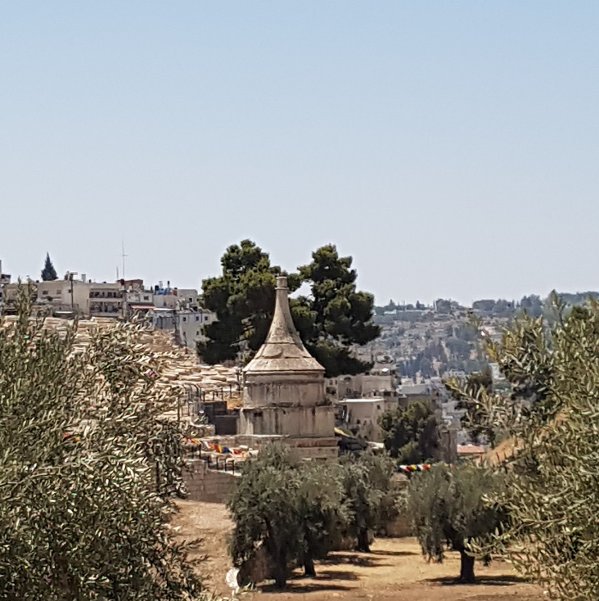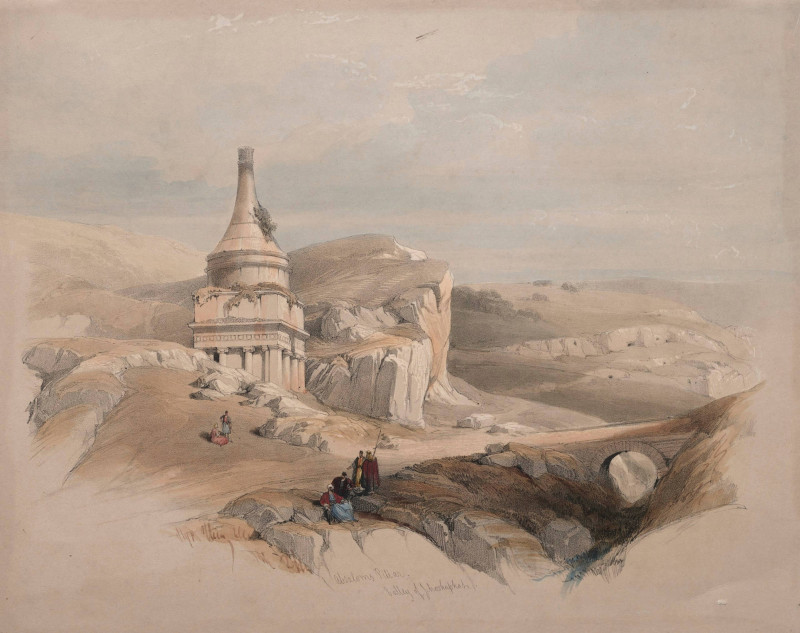The “Tomb of Absalom” in Jerusalem is one of the most intriguing and historically significant pilgrimage sites, dating back to the Late Roman period. This enigmatic monument, characterized by its distinctive square structure with Ionic columns and a conical roof, marks the intersection between the Valley of Jehoshaphat and the Kidron Valley. While its origins are shrouded in mystery, its association with the biblical figure Absalom and subsequent Christian modifications make it a fascinating subject of study.
The Enigmatic Origins of the Tomb of Absalom

Constructed around the 1st century CE, approximately a millennium after the death of Absalom, the rebellious son of King David, the original purpose and commissioner of the Tomb of Absalom remain unknown. The Old Testament mentions a “Pillar of Absalom,” which Absalom purportedly erected for himself due to his lack of a son to continue his legacy (2 Samuel 18:18). This legend, along with references in the “Copper Scroll” and Flavius Josephus’ “Antiquities of the Jews,” likely influenced the identification of this monument as the Tomb of Absalom.
Christian Appropriation and Symbols

Despite its Jewish origins, the Tomb of Absalom underwent significant modifications and appropriations by early Christians. A 4th-century Greek inscription at the entrance referred to it as the tomb of Zacharias, the father of John the Baptist, but these inscriptions were later erased. Recent discoveries, including a Tau cross, alpha-omega symbols, and other Christian markings, suggest that the site was used for Christian worship and pilgrimage. The Tau cross, in particular, is a notable Christian symbol predating other cryptograms like the Chi-Rho and was identified opposite the monument in 1999.
Pre-Constantinian Christian Worship Sites

During the 2nd and 3rd centuries CE, following the Roman decree banning Jews from residing in Jerusalem, Christian monks took over historical sites for pilgrimage. The Tomb of Absalom, with its prime location and lack of written evidence about its original purpose, became an ideal site for Christian worship. The presence of a baptismal font and other religious symbols indicates that it served as a martyrium, a place of veneration for early Christians.
The Tradition of Stoning

The Tomb of Absalom has a long history of being stoned by various groups, a tradition rooted in biblical practices. Absalom’s rebellion against his father, King David, and his other transgressions led to his association with punishment by stoning. Historical illustrations and accounts depict the stoning of the monument as an act of retribution for Absalom’s actions. This practice also served to prevent the re-establishment of the tomb as a place of Christian worship.
Conclusion
The Tomb of Absalom stands as a testament to the complex and layered history of Jerusalem. From its enigmatic origins and association with Absalom to its appropriation and modification by early Christians, this monument has played a significant role in the religious and cultural history of the region. The discoveries of Christian symbols and the tradition of stoning add to its rich tapestry, making it one of the earliest and most enduring pilgrimage sites in Jerusalem.
